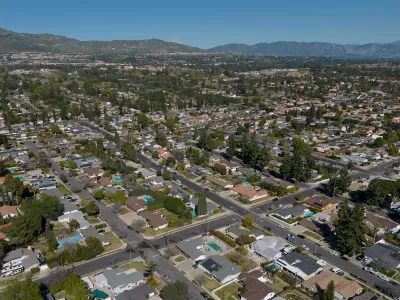The boom is happening in some unexpected areas.

Los Angeles County has permitted more accessory dwelling units per capita than any other California county, according to an analysis from the Los Angeles Times reported on by Terry Castleman.
Surprisingly, low- and middle-income cities are leading the charge as homeowners take advantage of new regulations to build additional units for family members and renters. The city of San Fernando permitted almost 70 ADUs per 1,000 existing housing units in the last six years, a number three times as high as the county average. The change in regulations also revealed the large number of unpermitted ADUs that already existed, many of which now have permits.
It is not fully clear why some cities are building more. Experts say the speed and ease of the permitting process in each city is a likely reason some cities are at the top of the list, but other factors could include differing municipal regulations and varying single-family lot sizes that dictate whether there is enough room for extra backyard structures.
According to industry experts, ADU owners in lower-income neighborhoods are more likely to rent out their units. “Cities that permitted more ADUs saw other benefits, the analysis showed: The 20 cities that added the most ADUs saw their housing stocks increase by 1.8% on average from 2018 to 2023, while the bottom 20 cities added only 0.5% in the same span.”

Planetizen Federal Action Tracker
A weekly monitor of how Trump’s orders and actions are impacting planners and planning in America.

Congressman Proposes Bill to Rename DC Metro “Trump Train”
The Make Autorail Great Again Act would withhold federal funding to the system until the Washington Metropolitan Area Transit Authority (WMATA), rebrands as the Washington Metropolitan Authority for Greater Access (WMAGA).

The Simple Legislative Tool Transforming Vacant Downtowns
In California, Michigan and Georgia, an easy win is bringing dollars — and delight — back to city centers.

DC Backpedals on Bike Lane Protection, Swaps Barriers for Paint
Citing aesthetic concerns, the city is removing the concrete barriers and flexposts that once separated Arizona Avenue cyclists from motor vehicles.

In These Cities, Most New Housing is Under 441 Square Feet
With loosened restrictions on “micro-housing,” tiny units now make up as much as 66% of newly constructed housing.

Albuquerque’s Microtransit: A Planner’s Answer to Food Access Gaps
New microtransit vans in Albuquerque aim to close food access gaps by linking low-income areas to grocery stores, cutting travel times by 30 percent and offering planners a scalable model for equity-focused transit.
Urban Design for Planners 1: Software Tools
This six-course series explores essential urban design concepts using open source software and equips planners with the tools they need to participate fully in the urban design process.
Planning for Universal Design
Learn the tools for implementing Universal Design in planning regulations.
Smith Gee Studio
City of Charlotte
City of Camden Redevelopment Agency
City of Astoria
Transportation Research & Education Center (TREC) at Portland State University
US High Speed Rail Association
City of Camden Redevelopment Agency
Municipality of Princeton (NJ)





























